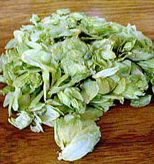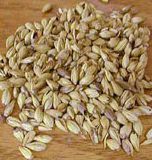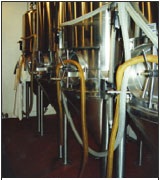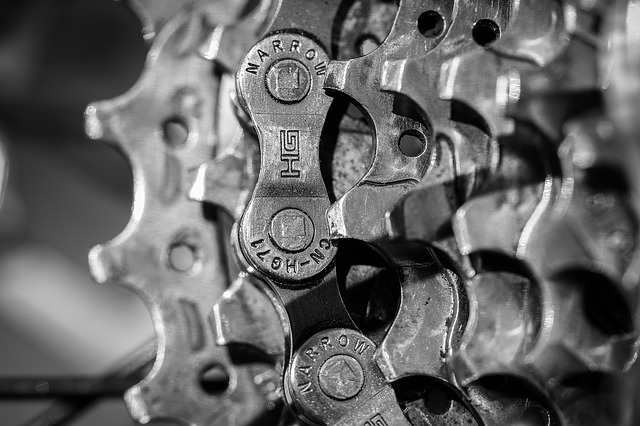Beer has existed for thousands of years. During its long history its popularity has changed considerably in response to technological advancements and social pressures. Although beer was created before the science behind it was understood, the process of making beer can be thought of as a series of chemical engineering tasks that includes separation processes and biochemical reactions. Although chemical engineers work in large breweries, many smaller breweries and microbreweries employ senior beer makers known as brewmasters. While not trained as engineers, brewmasters use much of the same equipment and many of the same skills that chemical engineers employ every day.
History
It is likely that the processes of malting and fermentation–both essential in beer brewing–were first discovered by accident about 6,000 years ago in the Middle East. It is believed that malted grain was first created when rainwater fell into earthen grain storage jars. After the grain was dried, it was found to be sweeter, and so was used to make bread. When the bread became wet, the soupy mixture of yeast and malt resulted in fermentation. It was not until the nineteenth century, however, that yeast was discovered to cause the fermentation that gives beer its alcoholic content [1].
Beer’s Evolution
Despite beer’s early origins, most experts today credit 16th century Germany for the beverage as we know it today. German brewers in the 1500s standardized brewing into the five-stage process still in use: malting, mashing, brewing, fermenting, and maturation. The German government was the first to control the content of beer when it passed the German Beer Purity Law, or Reinheitsgebot, in 1516. This law limited beer to four ingredients: water, barley, hops, and yeast. In accordance with the law, beers containing other ingredients were banned from sale in Germany as late as 1987, when the law was overturned.
Before the passage of the Reinheitsgebot, many German beer makers used rice, maize, sorghum, or other cereals to make a less costly or more distinct beer. Today, many beer makers still use additional ingredients such as sugar to improve taste or alcohol content, or barley to create a less costly product. Nevertheless, many beer makers around the world still advertise that they brew in strict accordance with Reinheitsgebot because of the modern association of beer with German culture.
Even while keeping within the confines of the general five-step brewing process, brewers have been able to create a wide variety of beers. Stout beer, for example, was invented by accident when an error in the malting stage caused the barley to cook too much and gave the beer a darker color and more distinct taste. Because of the long documented history of beer, brewers today have broad options when creating new varieties.
They can malt the beer in different ways; use nontraditional ingredients or different types of yeast; brew and ferment beer at different temperatures for different amounts of time; choose from a wide variety of hops (one type of which is shown in Fig. 1); and age beer at their discretion. The artistic freedom that brewers wield has resulted in a wide variety of beers, including bocks, stouts, and wheat beers, all of which come in different colors with different tastes and varying alcohol content.
Malting
The malting process converts the starches in barley into sugars. Starches are large hydrophobic molecules, meaning they do not dissolve readily in water. After undergoing the malting process, much of the starch in barley is converted into smaller, hydrophilic molecules that are readily soluble in water and are also available for fermentation by yeast.
The process involves soaking the barley in water then drying the barley for several days at cool temperatures to germinate the barley seeds, germination being the process by which plant seeds get ready for sprouting by converting starch into sugar so that the plant can grow. The malt is then dried by heating it slowly. The drying process is essential to the beer’s flavor: dark beers such as stouts use malt that is dried at a higher temperature so that it becomes roasted. It is the beer engineer’s duty to properly moisten the barley and properly heat the barley to its final malted state; any miscalculations can result in a poor quality of beer [2].
Next, the grain is milled so that engineers can perform the solid-liquid separation of the malt. The sprouting barley has its roots removed and is crushed between rollers in such a way that the sugars in the malt can dissolve into the water, but the barley seed shells are not too small to remove easily from the water.
Malting is perhaps the most critical process in making beer. Although the final malt product is intentionally varied according to the beer’s style, many aspects of the malting process remain tried and true. The barley must be germinated to the point at which it is about to sprout (Fig. 2); it must be cooked to a certain degree in order to drive out the water and to darken the malt to suit the beer style; and it must be milled so that sugars can dissolve in water more easily during the mashing phase.
Mashing
The crushed malt is then mashed by mixing it with water to extract the malt, hinder haze-forming proteins and further convert starches into sugars and dextrins which are important to the beer’s body and head retention. This process involves mixing the malt with water and heating it to high temperatures (between 115 and 170 degrees F) for several hours [1]. Mashing is not an exact science; it is the beer engineer’s duty to carefully monitor the mashing process in order to control quality. If the malt is mashed for the wrong amount of time or at the wrong temperature, the final product may suffer. The result of mashing is a sweet liquid called wort (Fig. 3). Engineers classify the wort according to its density. Organic molecules dispersed in the wort typically make it 4% to 7% heavier than pure water.
Brewers discovered early on that mashing is critical to the sweetness and alcohol content of beer. Since the sugars from the malt dissolve more easily at high temperatures, the mashing process is heated so that more sugars can dissolve into the wort in less time. Increasing the content of malt in the beer makes the final product sweeter and able to reach higher alcohol content. Today, brewers strive to optimize the mashing process in terms of temperature, amount of malt, and mashing time, according to the type of beer they are making. Sweet, high-alcohol beer requires a heavy wort, with a lot of sugars dissolved in it, while light beer comes from lighter worts.
Fermentation
Having been separated from the hops, the wort is sent through a liquid-cooled heat exchanger much like the radiator in a car, so that it can be cooled to a temperature hospitable to yeast. This heat exchanger (Fig. 4) is similar to those used in conventional chemical operations: cool water runs through pipes in contact with the hot wort [3]. Once the wort is cool enough–roughly 80 degrees F or cooler–yeast is added and fermentation begins. Yeast uses the sugars in the beer to grow and multiply and in turn emits its waste products into the brew: ethanol (alcohol) and carbon dioxide. Although the reaction involves many steps, the overall chemical equation is:
C6H12O6 -> 2CH3CH2O + 2CO2(1)
Thus, the biochemical reactions of fermentation result in both the carbonation and the alcohol content of beer.
There are two types of fermentation, bottom and top fermentation. In bottom fermentation, most of the yeast sinks to the bottom of the vessel. Bottom brewing takes place at lower temperatures (34 to 54 degrees F) and typically lasts about two weeks; this method is used to make beers called lagers [1]. By contrast, top fermentation occurs mostly at the top of the vessel and typically takes place at higher temperatures (59 to 77 degrees F) and for about one week [1]. Since top fermenting yeast has a higher alcohol tolerance than bottom fermenting yeast, it results in sweeter, stronger beers called ales [1]. Brewers and vintners have been experimenting with different types of yeast for centuries. Although yeast are simple single-celled organisms, many different types of specialized yeast exist because of mutations. The mutations in yeast can cause a change in the final beer product, and over the centuries, brewers have developed many different types of yeast. For example, the average yeast die at alcohol concentrations around 12% to 13%, but recently, some strands of yeast have been bred to withstand alcohol concentrations above 15%.
The fermentation process requires the engineer to choose the correct yeast, maintain an even fermenting temperature, and prevent the beer from coming into contact with oxygen. When fermentation is complete, the yeast is collected and used in the next batch of beer. Sometimes the yeast cells mutate and the yeast must be discarded; however, some breweries have used the same yeast for centuries.
Also important is the beer’s density. The engineer measures the density of the wort prior to and during the fermenting process. Since alcohol is less dense than water, the finished beer product is also less dense. By measuring the density of beer and comparing it to the original density, the engineer calculates the alcohol content. The alcohol content is very important to the final product and is a large factor in determining when the fermentation process should be stopped. If it is stopped too early, for example, the beer may lack alcohol and may be too sweet.
Maturation and Filtering
Like wine, beer must be matured so that its flavor develops and so that yeast and other cloudy molecules are removed. In the past, brewers often let beer mature for months in order to remove the taste of sulfur and to allow the yeast to settle so the beer looked less cloudy. Recent advances in beer engineering have shortened the maturation process from three months to less than one month [4]. Freshly brewed beer often has a hint of sulfur to its taste because of the presence of H2S and other sulfur containing compounds [4]. During maturation, the H2S molecules escape the liquid as a gas and are vented from the beer. To further prevent the taste of sulfur, beer is typically stored in aluminum cans or dark bottles to prevent ultraviolet light from initiating chemical reactions that produce sulfur-containing compounds [5].
In the past, maturation process involved cooling the beer to very low temperatures for extended periods of time in order to remove yeast and other chemicals that can make the beer cloudy. However, modern advances in filter technology allow yeast and other cloudy molecules to be easily and quickly removed from beer [4]. New developments in taste maturation and filtering processes have helped breweries save time and money in the production of beer.
Over the centuries, beer’s popularity has waxed and waned. Some religions, including Christianity and Islam, forbid or discourage the consumption of alcohol, although this has not prevented beer from gaining popularity in much of the world. In some environments, beer was a necessity for survival. Bavarian monks in the 11th century used beer to sustain themselves during prolonged periods of fasting. Beer was also useful in medieval society: it was safer to drink than water because the alcohol in it killed microorganisms [1]. However, because of social problems associated with drunkenness and religious arguments against alcohol, beer has also come under fire; the American prohibition and the outlaw of beer from many Middle Eastern countries are just two examples of the beverage’s struggle through time. Although the issue of alcohol control remains contentious to this day, Americans have recently developed a taste for a wider variety of foreign and microbrewed beers.
Conclusion
Although beer has been around for thousands of years and was most likely discovered by accident, the modern day production of beer is highly complicated and can only be accurately described by science. The practice of brewing has evolved from a routine trial and error method to a much more precise process thanks to chemical engineers and brewers alike.







